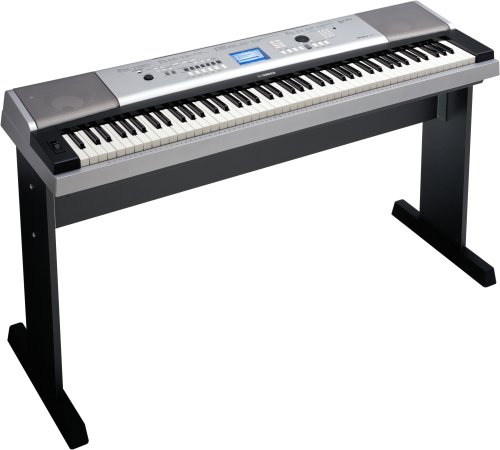So you want to buy a piano. What a great musical adventure you have before you. Starting out on the journey, however, can be overwhelming, what with so many types and brands of pianos to choose from. That's why I've provided this primer on piano types and brands for you, so that you can quickly and easily find the right piano for you and get on with enjoying a lifetime of making beautiful music together.
Types of Pianos
Grand pianos vs. Upright pianos: Grand pianos have an average of 10,000 moving parts and range in size from 4' 6" to over 9' long. They have a winged shape with a curved right side and flat left side. Grand pianos are generally owned by professional and more serious amateur pianists.
The two primary types of grand pianos are Concert Grand pianos, the largest of grands reaching 9' and over, and Baby Grand pianos, any grand piano that is smaller than 6' tall. Different sizes of grand piano differ in the potential volume of sound it is able to produce, the tonal quality of its lower register (the bass notes), and the overall sound quality.
Also known as vertical pianos, upright pianos have an average of 5,000-6,000 moving parts. They typically cost less and take up less space than grand pianos, and are more commonly owned by amateur and hobbyist piano players.
Upright pianos come in various types depending on their size, the tallest reaching about 60" in height. The taller an upright piano is, the better the action.
* Spinet pianos - approx. 36" tall
* Console pianos - approx. 40" tall
* Studio pianos - approx. 45" tall
* Professional pianos - approx. 48" tall
It is entirely possible to achieve the same quality with an upright as with a grand piano and, in some cases, better quality of tone than certain baby grands.
Digital pianos vs. Acoustic pianos: In contrast to traditional grand pianos and upright pianos, digital pianos utilize the technologies of audio microchips and speakers to reproduce the sounds of a traditional piano as well as those of other keyboard instruments like organs and harpsichords. Digital pianos also offer players the ability to record their practice sessions and performances.
The following brands produce some of the best digital pianos available:
* Alesis;
* Casio;
* Daewoo;
* Kurzweil;
* Roland;
* Suzuki;
* Technics;
* and Yamaha
Brands of Pianos
Because of differences in materials and construction and design techniques, a piano's sound and action vary greatly depending on where in the world it is made.
American pianos: American piano manufacturers are reputed for producing pianos of top-quality construction and design and, as a consequence, are typically more costly than most European pianos. At the top of the list of major U.S. brands of pianos is Steinway. Steinway pianos are considered by many professional piano players to be the premiere pianos, as well as among the most expensive. Steinway is best known for their line of grand pianos;
Other major U.S. piano brands include:
* Baldwin (also produces the Chickering and Wurlitzer brands);
* Mason & Hamlin (limited production, high-end pianos);
* Hobart M. Cable
* Winter & Company.
Asian pianos: Asian-made pianos are also highly valued today, with the two premiere Asian brands of piano - Yamaha and Kawai - coming from Japan. Yamaha produces some of the world's most revered pianos, which explains why they must produce 200,000 pianos each year to keep up with demand. Kawai is renowned for having been the first to utilize plastic parts in their pianos.
Other major Asian brands of piano include:
* Daewoo;
* Hyundai.
* Nordiska;
* Pearl River;
* Samick;
* and Young Chang
European pianos: Many countries in Europe - the U.K., France, and the Czech Republic - also produce great pianos, though arguably the best European pianos come from Austria and Germany.
Among the finest of Austrian and German pianos are:
* Bechstein;
* Bluthner;
* Bosendorfer;
* Feurich;
* Forster;
* Grotrian;
* Hamburg Steinway;
* Ibach;
* Sauter;
* Schimmel;
* and Seiler.
How to Evaluate Pianos
To decide on what type of piano to get, first consider where you plan to keep it and how much you'd like to spend on it. That will help you hone in on what types and brands you can feasibly choose from. Then you can start looking at (or listening to, as the case may) such other factors as piano tone quality, tuning stability (or life expectancy), action (or piano touch), and piano finish (ie. clear or opaque).











